
6_Accenture-Augmented-Reality-Customer-Experience-Drive-Growth
.pdf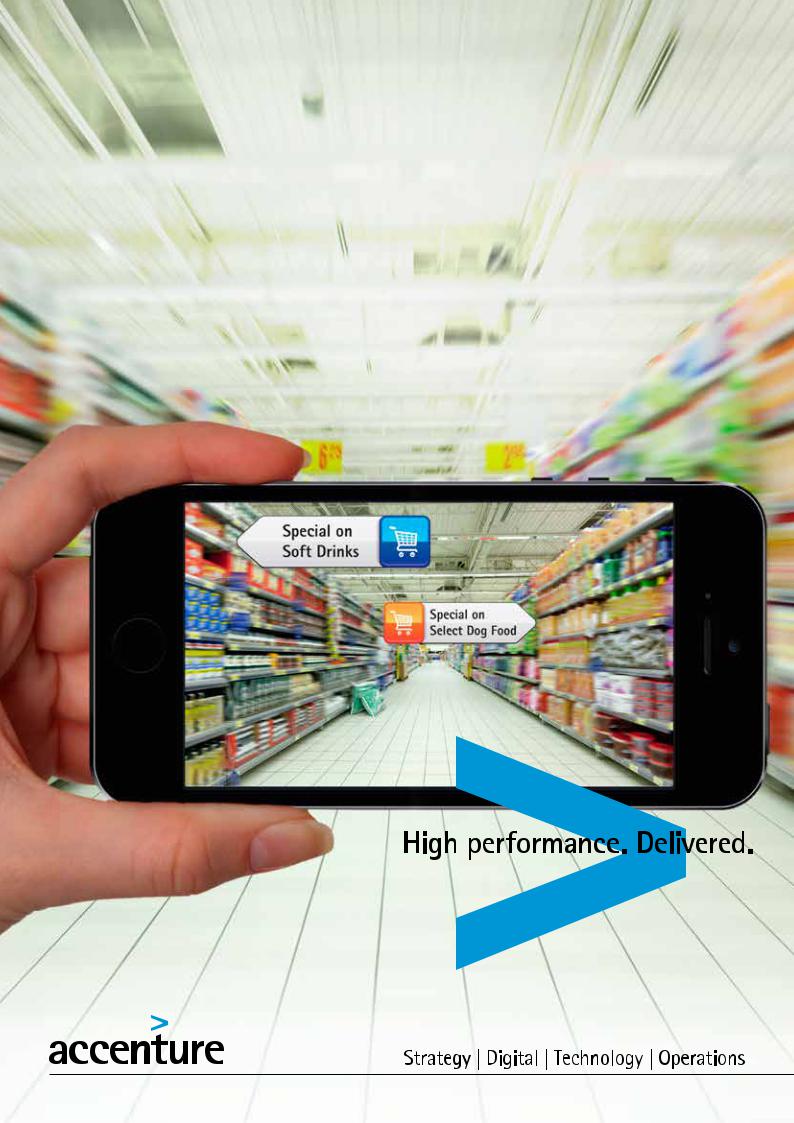
Life on the digital edge:
How augmented reality can enhance customer experience and drive growth
Copyright © 2014 Accenture. All rights reserved. Accenture, its logo, and High Performance Delivered are trademarks of Accenture.

Every business is a digital business. That’s because every customer is now a digital customer. Nowhere is this more evident than in the retail arena, where shoppers have used social networking and mobility to transform their purchasing experiences. In response to the rise of the digital customer, retailers are looking to leverage digital technologies to drive new levels of customer engagement and competitive advantage. One area that holds particular promise is augmented reality.
2
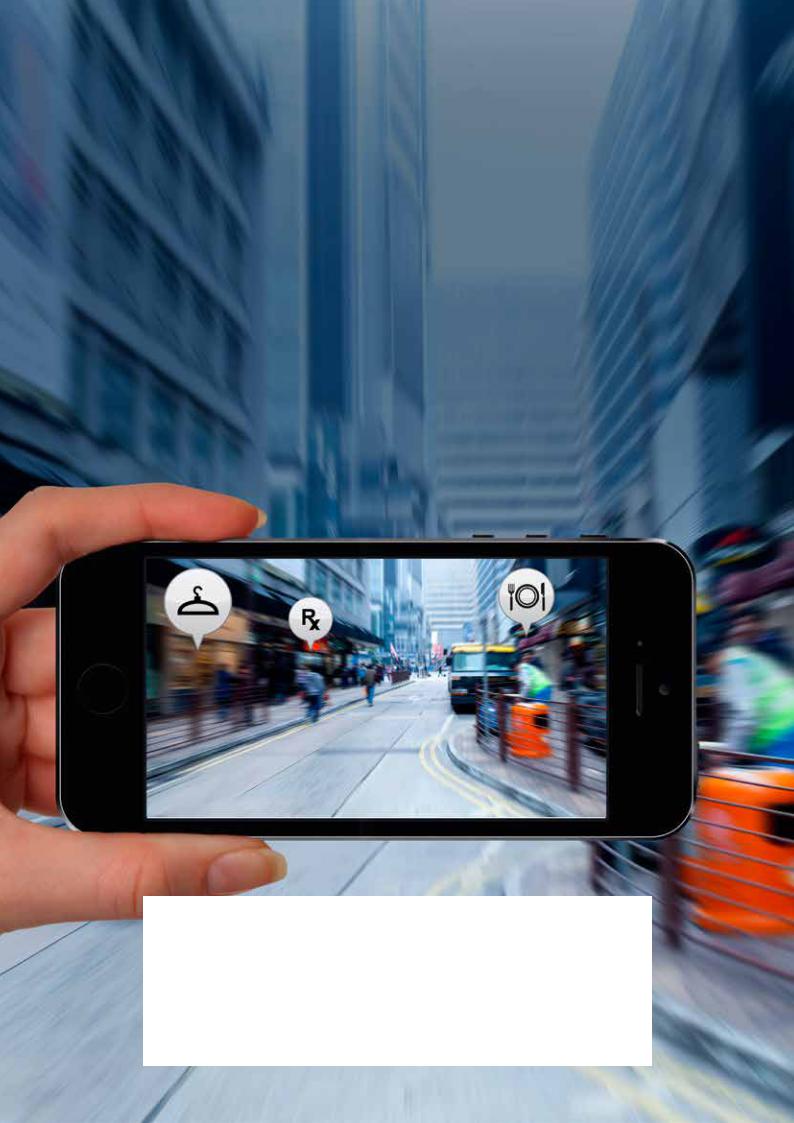
The (digital) natives are restless
With today’s proliferation of social networking and mobile applications, customers have non-stop access to more knowledge and more opinions than ever before. This information is shaping their preferences for products and services, as well as their expectations for personalized retail experiences. It is also upending the linear buying process. That traditional path to purchase—which begins with awareness and ends with purchase and loyalty—has lost its relevance for today’s customers. It is too slow, too static and too generic for buyers who now perpetually find themselves in a non-stop, non-linear sales channel.
It’s not easy to meet the needs of this new breed of customer. In an “always-on” world, customers have the power to continually redefine the retail shopping experience they want to have. Their expectations are rising—and constantly evolving. They want to be enticed and engaged. They want digital content and digital options that are easily accessible 24/7. And they want a seamless experience, across multiple channels that enable them to search, compare and purchase products and services on their terms.
Digital natives are a new generation of customers, who have grown up using digital technology, e.g. mobile, from an early age.
3

Building on the digital momentum
In response, many retailers are building their digital selling capabilities, including the introduction of digital tools, online features and social media to drive sales across multiple channels. Their actions are understandable. Some are pursuing digital sales techniques because they see the value that their industry peers or companies in other industries have generated through digital action. Others are taking more of a leadership role. While they acknowledge the risks they might be taking, these digital leaders see an enormous potential in being first-to-market with innovative digital solutions, striving to introduce a service that attracts “buzz” and builds loyalty.
Today, leaders and fast followers alike are more inclined to see digital solutions—along with location, product pricing and assortment, and customer service—as key drivers of growth in an environment of non-linear sales. While the true effect of digital selling on profitability is not yet clear, what is clear is that digital technologies can be used to do more than facilitate the purchasing process. The true power of digital technologies lies in their ability to capture customers’ attention and enable satisfying customer experiences.
By offering those experiences, retailers are more likely to build the profitable relationships digital customers crave.
Accenture believes one of the main goals of any retailer’s digital investment should be to increase customers’ desire for products and services. And we believe there’s no better way to accomplish that than by using the technologies that customers currently own. The momentum already exists. Retail customers now regularly turn to their own devices to support their in-store decision making. In fact, surveys showed that two-thirds of primary household shoppers with a smartphone have used it while shopping. And nearly half (45 percent) use them frequently.1 Customers in the 18-29 age range are most likely to use smartphones during their in-store shopping trips. Importantly, however, the use of smartphones while shopping is not limited to younger generations.2
A recent survey carried out by Thrive Analytics and released by the Local Search Association revealed that 81 percent of 44to 53-year-olds and 69 percent of customers older than 54 use their smartphones while shopping in stores.3
Given the proliferation of smartphone usage while shopping, the questions for retailers become: “How can we use customers’ mobile computing devices to engage with those customers in more meaningful ways?” and “How can we delight today’s digital customers with a differentiated customer experience that is noticed and valued?” Augmented reality is one possible answer.
4
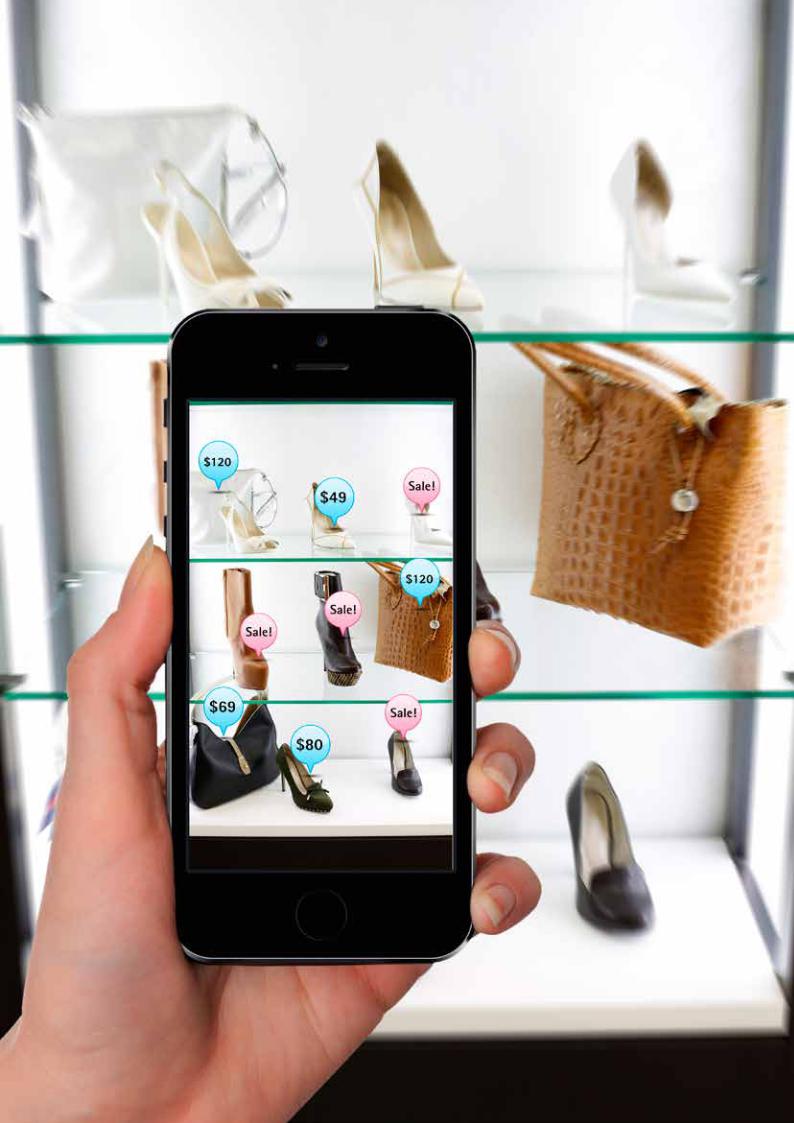
5
Augmented reality in retail
Broadly defined, augmented reality refers to the overlaying of physical environments with digital content and images to provide users an enhanced (or augmented) experience of reality. From the heads-up displays originally developed for military fighter jets (and now used widely in the automotive and gaming industries) to the immersive experiences enabled by Google Glass, augmented reality applications are popping up all over—even in retail.
Thanks to the broad adoption of smartphones and mobile internet devices, retailers now have an exciting opportunity to bring product labels, shop windows or catalog images to life in ways never before imaginable. It’s an innovative approach to reach customers— especially the digital customers
for whom traditional marketing strategies no longer work. Evidence suggests that customers are clearly ready for the new approach. Accenture research from 2014 shows that even though 59 percent never have had the chance to try augmented reality, only 30 percent are unsure of how it works. On top of that, only 23 percent do not find it useful.
Customers are experiencing a number of key shopping challenges, which they preferably would like to solve from home.
Many retailers have taken notice of customers’ existing pain points, and some have taken action using augmented reality to help create more satisfying customer experiences.
They are doing so in several ways:
•Finding retail items and accessing product information. Technologies are now available that make it possible for grocery shoppers to scan the aisles with their smartphone cameras (and potentially their smart glasses) to quickly identify products that are on sale or that address certain requirements
(e.g., gluten-free), tastes or other preferences (e.g., locally produced, fair-trade certified or organic).4 Google’s Project Tango goes a step farther, offering customized 3D in-store maps to help mobileequipped shoppers easily find the specific products they are seeking.
Walgreens is one of the retailers piloting the Google solution, which also offers product information and promotions that seem to “pop out” of the shelves as customers navigate to their desired product.5 Other augmented reality solutions enable shoppers to receive additional personalized information, recommendations, recipes and reviews when they scan specific products with their mobile devices.
•Sampling and visualizing products. Several fashion retailers, including Topshop, De Beers and Converse are using augmented reality to enable their customers to “try on” clothes, jewelry or shoes virtually. Shiseido and Burberry
Beauty Box stores offer similar augmented reality solutions for shoppers looking for cosmetics.6 These types of solutions, often referred to as a “magic mirror,” help customers decide which clothes or accessories to buy without having to try them on. Augmented reality can also show products and product variants that aren’t available in a physical store. For example, American Apparel has launched a colorchanging app that allows shoppers to see clothing items in different colors.7 Volvo has launched a similar solution. The carmaker’s augmented reality X-ray app enables customers to view cars through their iPad to see how they look in different finishes, learn about different features, and even go for a test ride. The solution also offers a “shoppable window” with special glass that allows customers to browse goods for sale while the store is closed.8
Augmented reality is an emerging technology that superimposes computer-generated images and content onto real-world environments, thereby enhancing a user’s perception of reality by combining physical and virtual elements.
6

Accenture’s 2014 Augmented Reality Survey was performed in September 2014 with 400 US respondents.
7
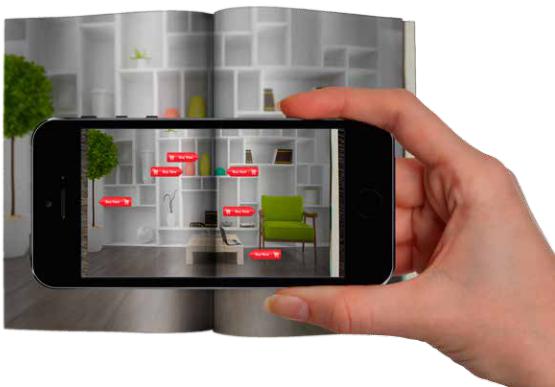
Importantly, customers can use this variant of augmented reality to sample products without visiting a physical store. Digital creative studio Holition works with a number of high-end retailers to make it possible for shoppers to “try on” luxury accessories such as jewelry and watches while sitting in front of their computer screens.9 And Swedish home furnishings company IKEA has, together with Accenture and other allies, developed an innovative way for its customers to view products in their own homes (see sidebar). This means customers are able to determine whether
the IKEA product matches their requirements in terms of style, color and size—all from the comfort of their homes.
•Playing. Augmented reality can be used to help customers unlock their imaginations and trigger a playful mind. Danish toy company, LEGO, for example, uses augmented reality to drive gamification.
In-store customers simply hold a
LEGO box against a flat screen kiosk and watch the LEGO model come to life in 3D. The solution helps customers see what the finished model will look like from all angles and understand its features, and it triggers their desire to play.10
•Browsing and buying. Yihaodian, a leading Chinese e-commerce grocer, launched 1,000 virtual stores overnight to compete against its brick-and-mortar rivals. Located in “blank city spaces” across China (and sometimes right in the parking lots of their main competitors), these augmented reality experiences allow customers to walk around in the virtual stores and order 1,000 different products, which are later delivered directly to their homes.11
•Post-purchase support.
Augmented reality can also be used for truly functional purposes, such as helping users understand how to use a product. For example, Audi has created a virtual manual that provides the owner instant information about everything from the location of the coolant reservoir to what that button on the dash really does.12 Similar solutions from other retailers showcase how customers can assemble their products or install their dsl/broadband, stereo or TV equipment at home.
Augmented reality is still in its infancy
•I have never had an opportunity to see augmented reality in a live situation (59 percent agree or strongly agree)
•I am not sure how augmented reality works (30 percent agree or strongly agree)
•Augmented reality doesn’t seem particularly
useful to me (23 percent agree or strongly agree)
Source: Accenture 2014 Augmented Reality Survey
8

Seeing is believing (and buying):
IKEA’s embrace of augmented reality
The primary way that IKEA, a leading retailer of home furnishing products, reaches its customers is through its catalog. Each year, more than 210 million copies are produced in 60+ languages, making it—next to the Bible—the most printed document in the world. For years, IKEA’s investment in its print catalog paid off, attracting millions of customers to the retailer’s website and stores around the world.
As its customers became more digital, IKEA recognized the opportunity to use digital technologies to make the catalog even more relevant and inspiring. IKEA turned to augmented reality to deliver the content—and the differentiating and engaging experiences—that digitally savvy customers desired.
The result, which was unveiled with the launch of the retailer’s 2013 catalog, revolutionized the shopping experience for IKEA customers. It also drew widespread industry and press attention. Never before had an augmented reality solution been deployed to a retail customer market at this scale, in more than 60 markets, so quickly. And never before had a full-scale solution of this magnitude seamlessly combined print and digital content.
Core components of the solution include the IKEA catalog application, used as a digital layer on top of the print catalog, and image-recognition technology that identifies the catalog pages without the need for QR codes or symbols.
The readers simply scan the catalog pages with their smartphones or tablets to unlock a world of new content. They can, for example, see what’s behind a closed closet door, launch a 360-view of a room set, and display how to assemble products. They even have the ability to place virtual, life-size pieces of IKEA furniture in their own homes to determine if the color, style and size fit their needs. This all but eliminates a major barrier to online purchases, and significantly reduces the risk of returns.
Beyond the unique experiences now offered to customers, IKEA’s innovative use of augmented reality has changed how customers view the IKEA brand. The innovation with which it engages its customers now matches the innovations of its product designs—evidenced by the fact that the IKEA catalog app quickly became one of the most used and downloaded branded apps in the world. Most importantly, the solution transforms the way IKEA communicates with customers. Instead of relying on a static communication distributed once a year, IKEA is now able to provide new, up-to-date and interactive content on a continual basis. It’s that content and that experience that will keep attracting customers for years to come.
9
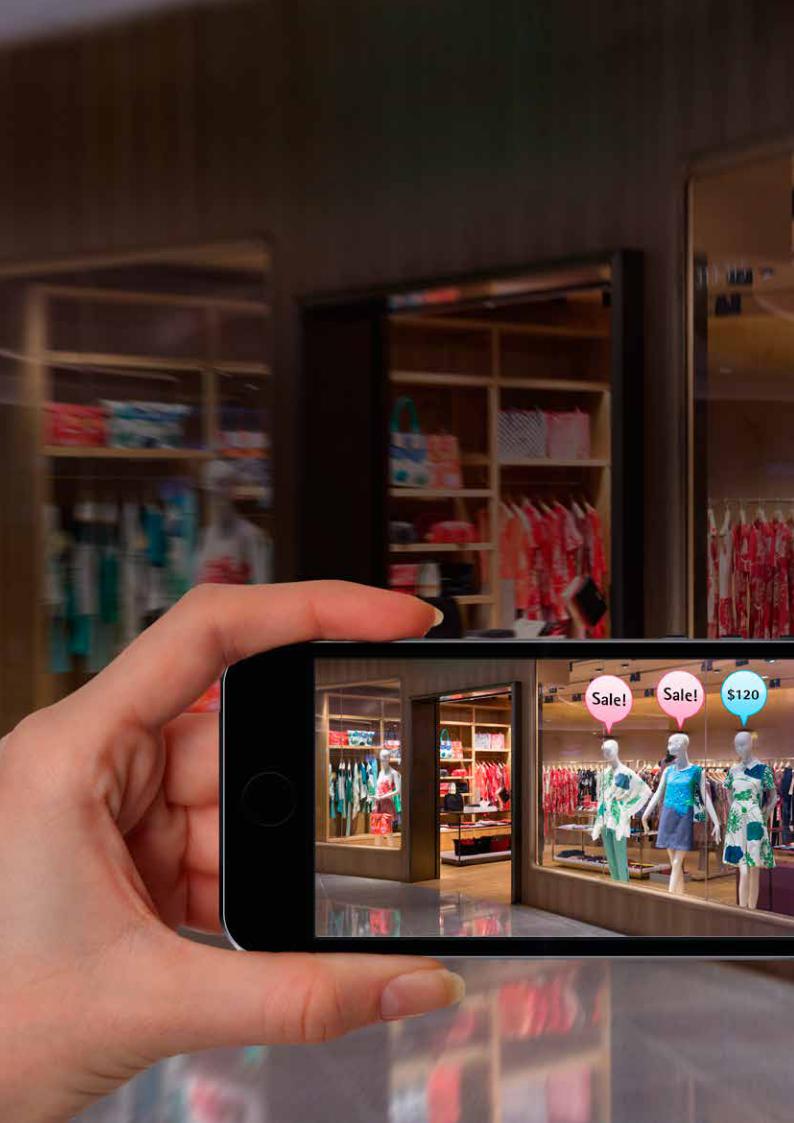
Business value of augmented reality
Augmented reality has a lot going for it. It is easy to use and engaging. It overcomes the challenge of merging physical experiences with digital content. Along the way, it creates brand awareness and boosts customer engagement in an exciting way. And, importantly, it allows companies to regain ownership of the customer experience through the use of branded apps. Augmented reality can drive value in four fundamental ways:
•Create an in-store experience at home. Even though in-store applications of augmented reality are powerful, their real potential is unleashed when they allow customers to experience virtual products in new environments. Product images have always been an important source for information when shopping online. But those images can only convey so much. Augmented reality solutions, such as the one offered by IKEA, bring the in-store experience to the customers’ home, letting them see IKEA products together with the existing furniture. They merge the benefits of in-store shopping with the convenience offered by the online environment.
•Enhance and update print media with digital content. Print media has many advantages. It can be inspiring. It does not require any special hardware. And it can be distributed broadly. Print media does, however, have some drawbacks. It is static, does not invite interaction, is not easy to update, and does not facilitate a purchase in a seamless way. Augmented reality combines the advantages of the print and digital world and encourages the customer to delve ever deeper into the shopping journey. It helps retailers that rely heavily on print materials, such as IKEA, increase the return on their print investments, and helps to verify that their material is up to date.
10
